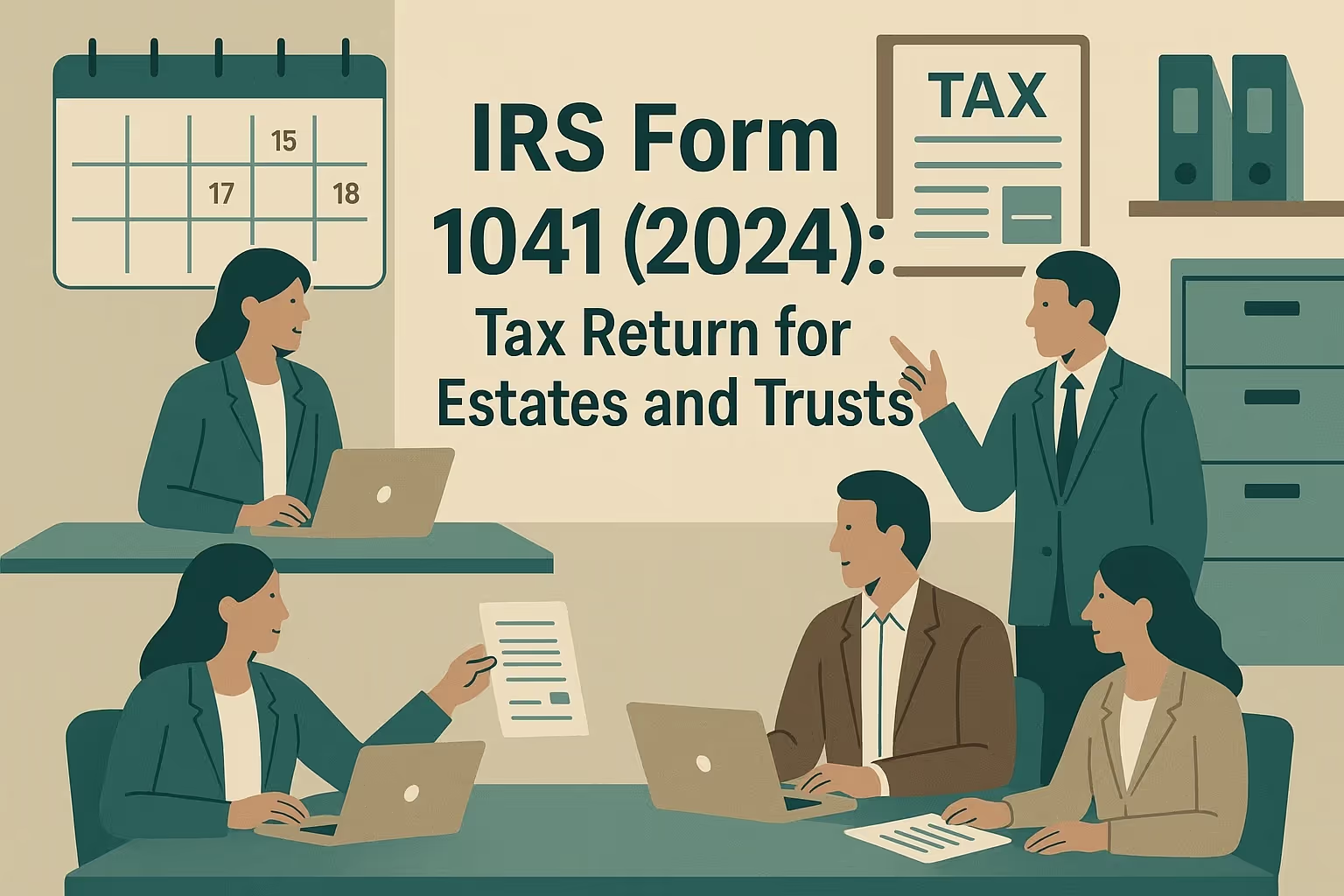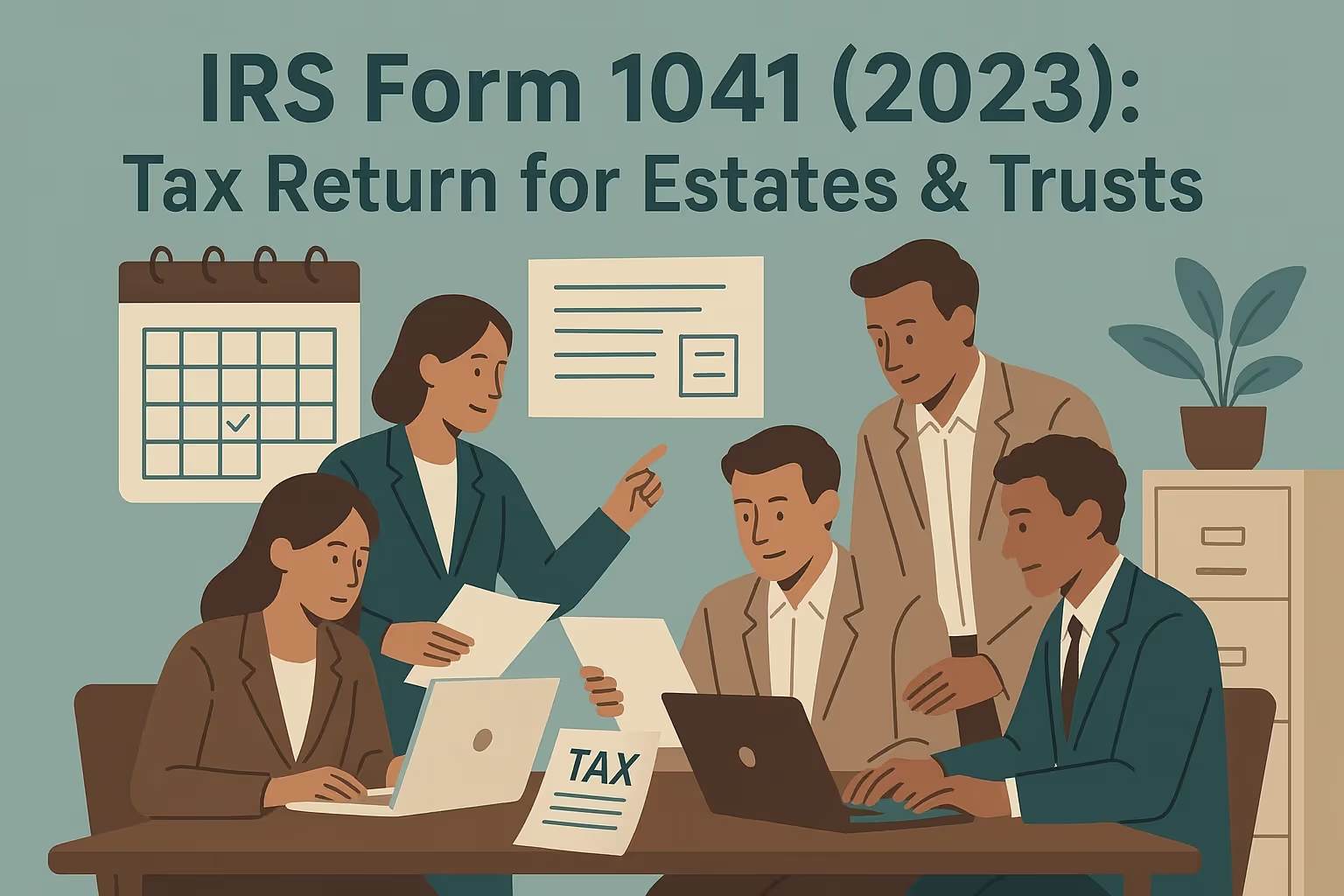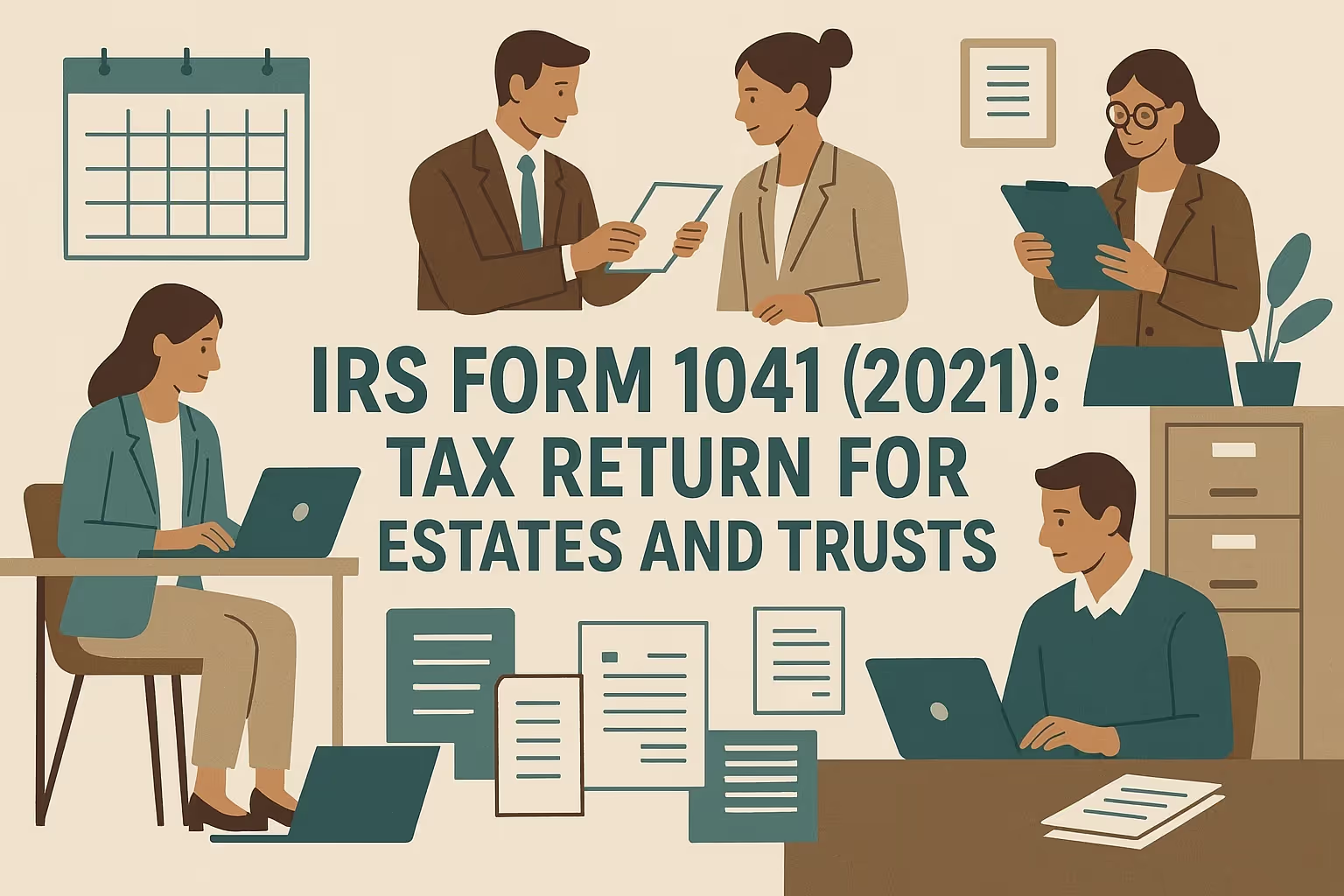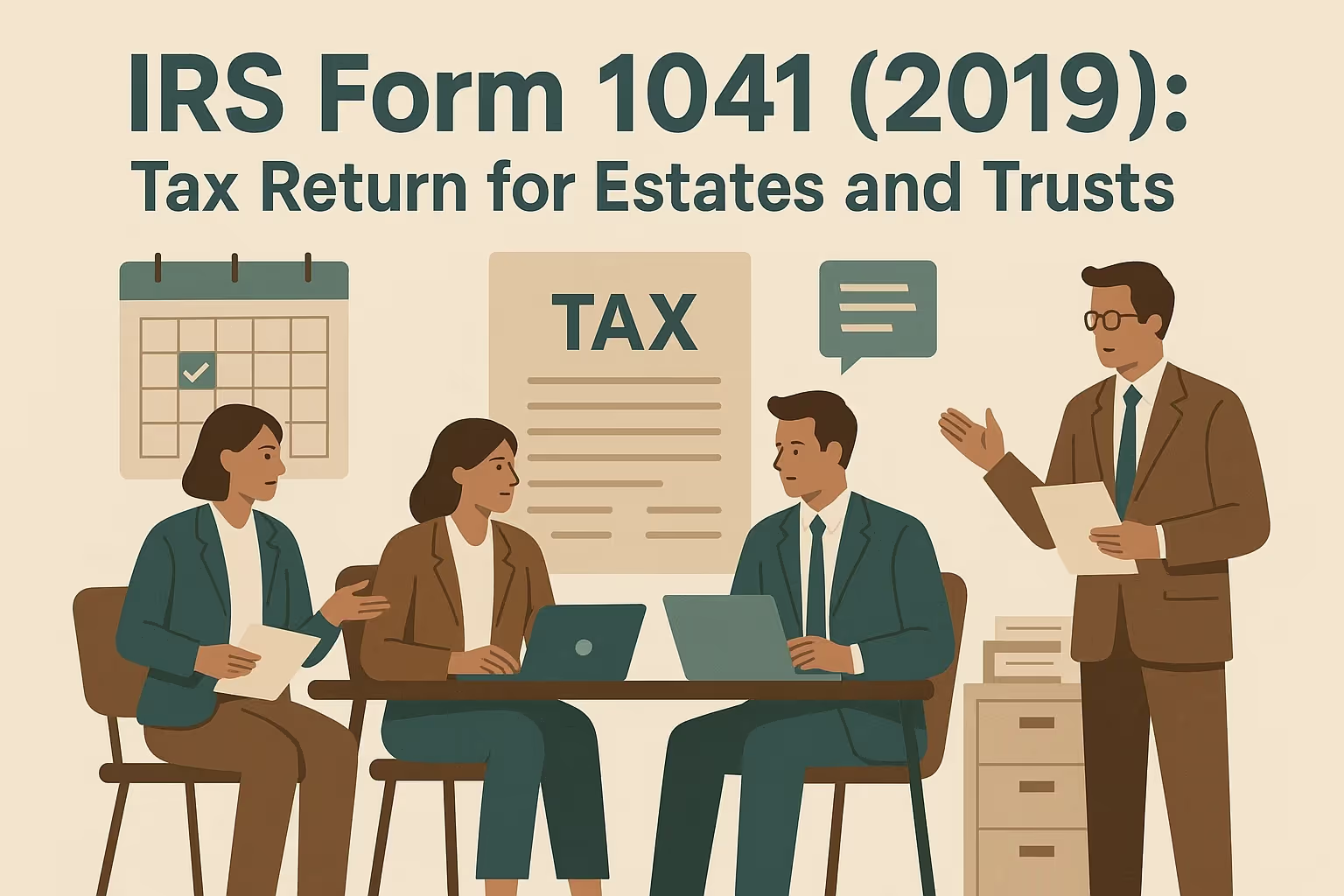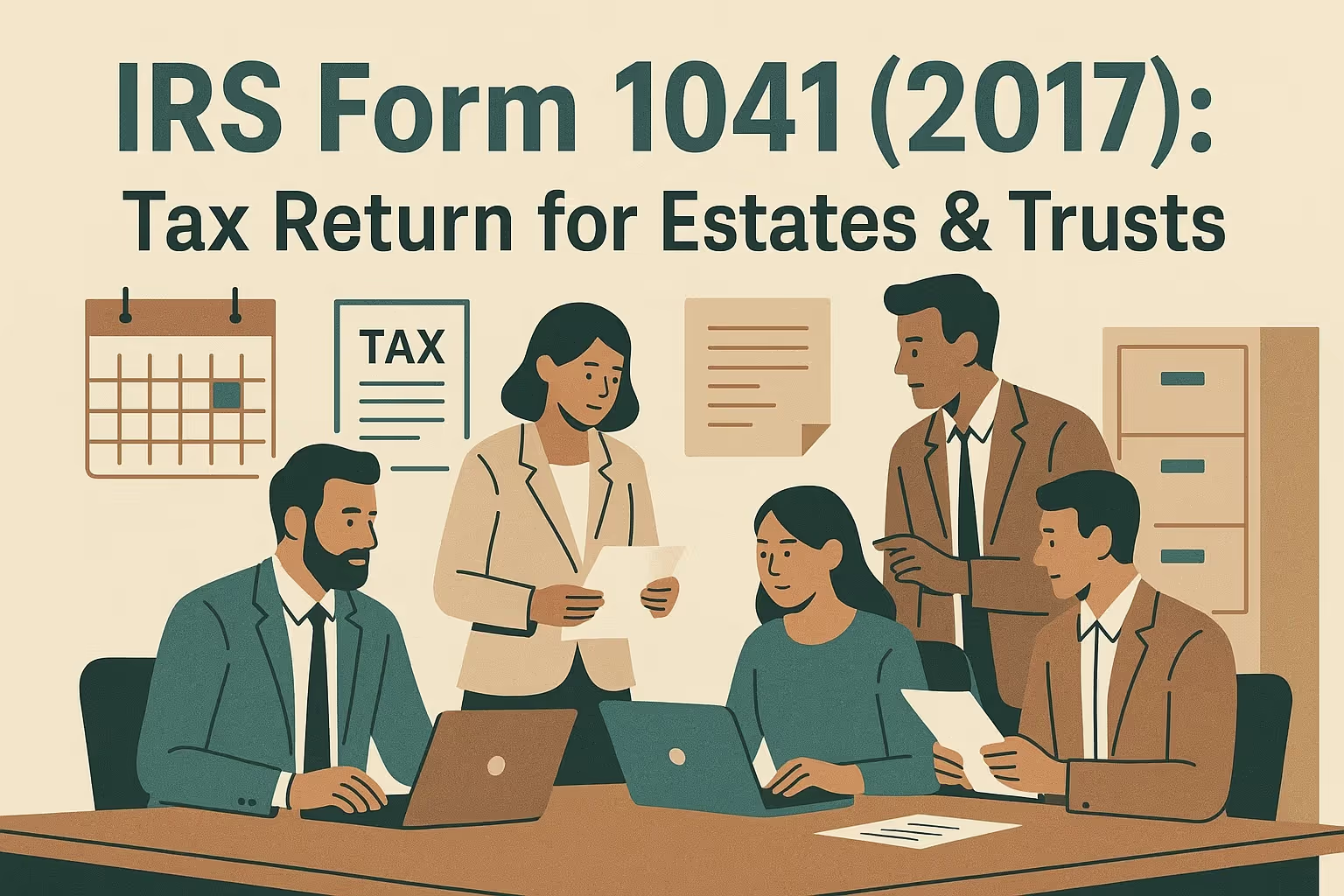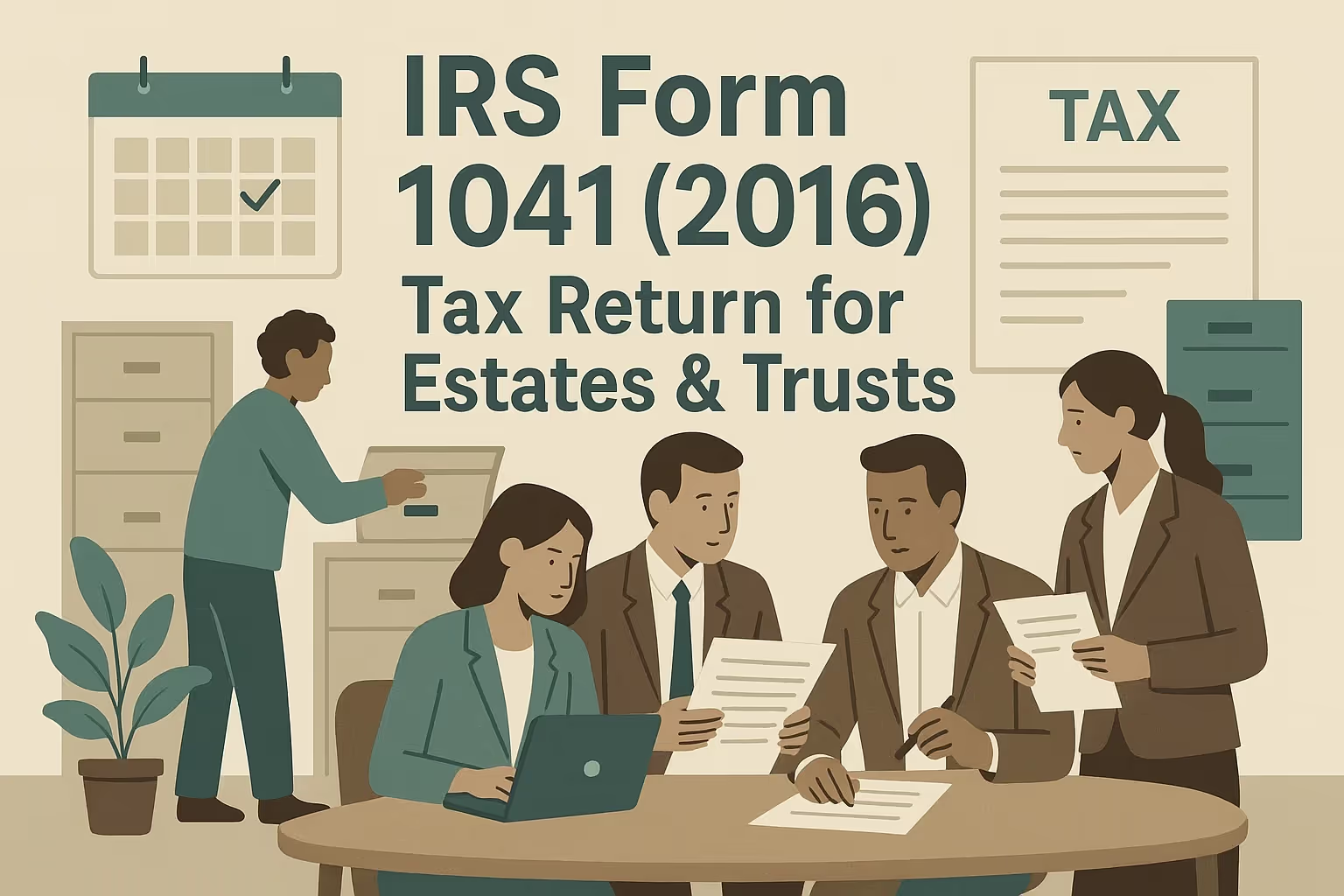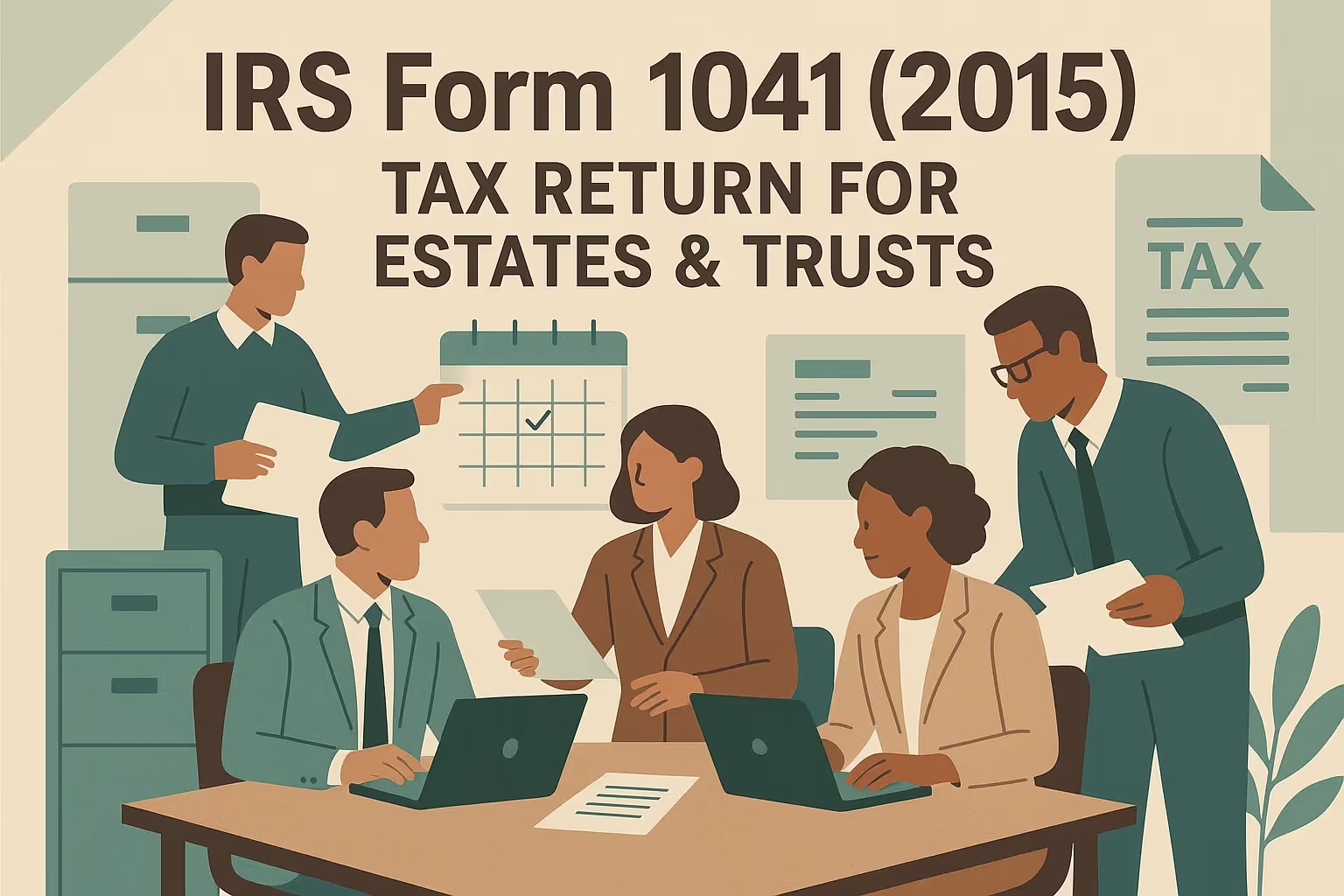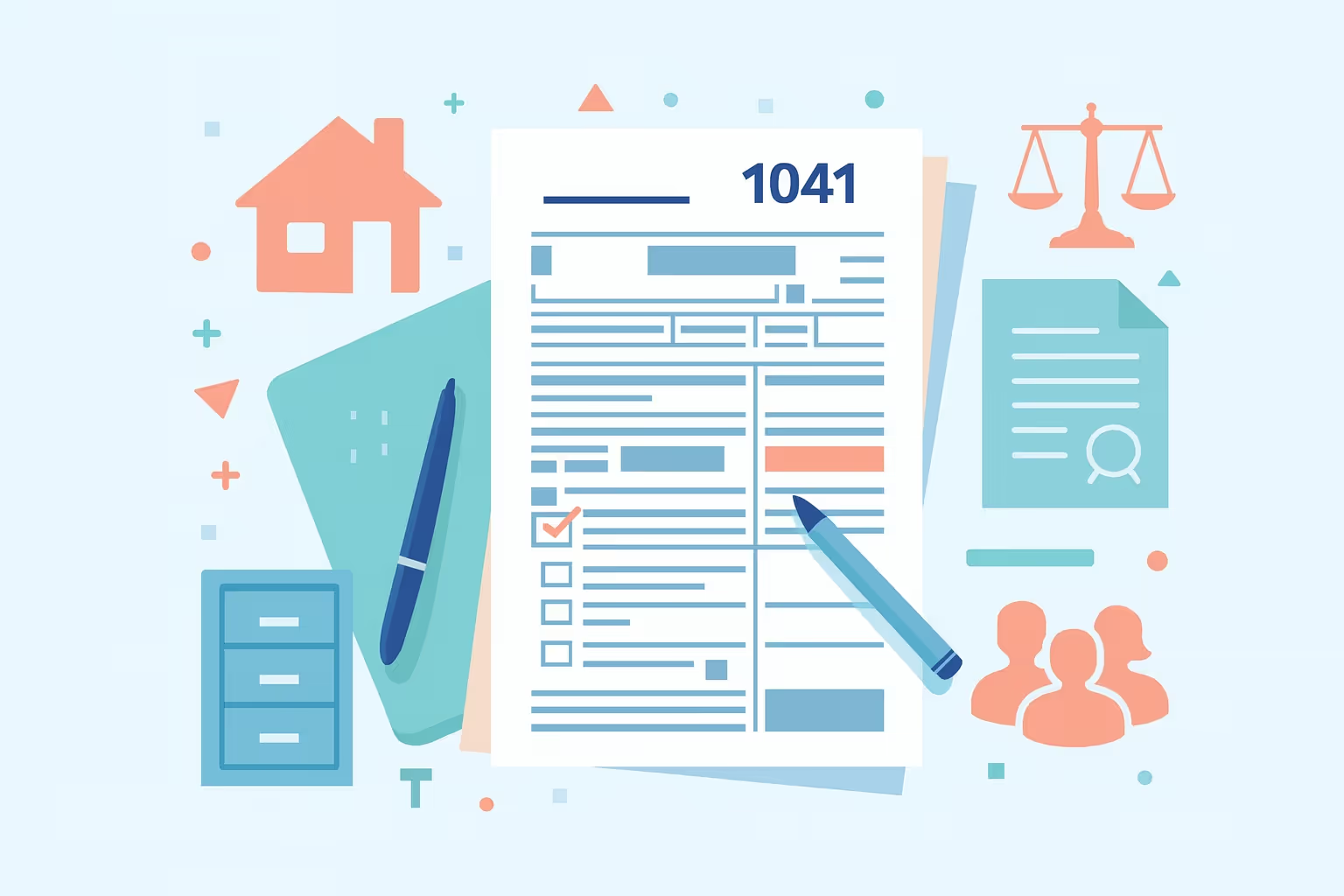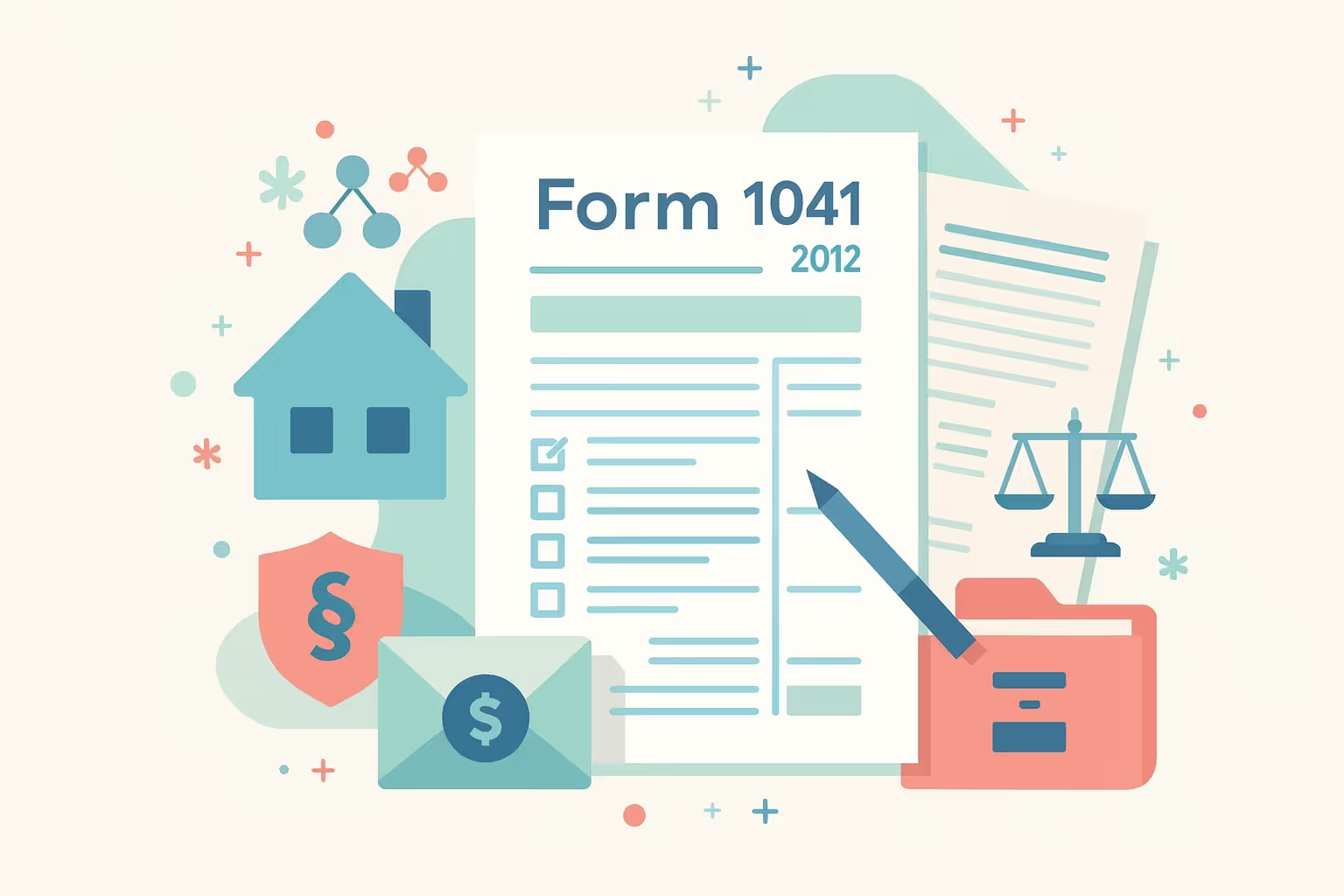IRS Form 1041 (2018): Tax Return for Estates and Trusts

What IRS Form 1041 (2018) Is For
IRS Form 1041 (2018) is the U.S. Income Tax Return for Estates and Trusts, used by a trustee, executor, or personal representative to report income, deductions, and tax liability for an estate or trust. This income tax return reports gross income, taxable income, credits, and deductions related to income earned or income distributed to beneficiaries during the tax year.
The Internal Revenue Service requires a fiduciary to file Form 1041 if the estate has gross income of $600 or more, or if the trust has any taxable income, income distributed to beneficiaries, or a nonresident alien beneficiary.
Filing ensures that all income, deductions, and taxes on designated assets are correctly reported, even when the estate or trust has already transferred property or other assets after the decedent’s death. Those handling older returns or specialized fiduciary forms can visit the IRS Form Help Center for organized instructions, schedules, and related IRS resources.
When You’d Use Form 1041 for 2018 (Late or Amended Filing)
You would file Form 1041 for 2018 if you are addressing an unfiled or amended return from that tax year. Common examples include responding to an IRS notice, correcting unreported trust income, or resolving discrepancies in capital gains or deductions. The tax year 2018 return was originally due in the fourth month after the end of the year, April 15, 2019, for calendar-year filers.
If the decedent passed in 2018, the executor or trustee must report all income earned up to the date of the decedent’s death and pay tax due on any additional income distributed or accumulated by the estate or trust. While the refund period for 2018 has expired, late filing is still required to settle tax liabilities, pay tax owed, and close the estate or trust in compliance with IRS regulations.
If you are dealing with multiple unfiled fiduciary returns or responding to IRS notices, our guide on how to handle unfiled federal returns can help you confirm whether additional filings are required.
Key Rules Specific to 2018
- Capital gains brackets: The rates were 0% up to $2,600, 15% from $2,600 to $12,700, and 20% above $12,700.
- Elimination of deductions: Miscellaneous itemized deductions subject to the 2% floor were removed, though administrative expenses under section 67(e) remained deductible.
- Net operating losses: Carrybacks were eliminated, allowing only carryforwards to offset future taxable income.
- Exemptions: Estates had a $600 exemption, simple trusts had a $300 exemption, complex trusts had a $100 exemption, and qualified disability trusts had an exemption of up to $4,150.
These rules affected income distribution deduction calculations, accumulation distributions, and how trustees determine each beneficiary’s share of income or capital gains from trust-generated earnings.
Step-by-Step (High Level)
- Gather records: Collect financial statements, trust agreements, and IRS transcripts showing reported income, wages, dividends, and interest. Include prior tax returns, K-1s, and designated assets owned by the estate or trust.
- Use the correct-year form: Always use the official 2018 version of Form 1041 and instructions. Filing with outdated software or using a form from a previous year may lead to rejection.
- Attach schedules: Include schedules such as A, B, G, J, and K-1. Each Schedule K-1 must accurately show the beneficiary’s share of income, deductions, credits, and any capital assets distributed during the period.
- File the return: Submit the return by mail to the correct IRS address or e-file if available. For older tax years, paper filing is usually required. Include payment for any tax bill owed to prevent interest from accruing.
- Maintain records: Keep copies of all forms, schedules, and payment confirmations. Trustees and executors are responsible for ensuring that future inquiries from the IRS can be addressed promptly and efficiently.
If you have received an IRS notice or balance-due letter regarding your 2018 Form 1041, our overview of the IRS collection process explains what happens next and how fiduciaries should respond.
Common Mistakes and How to Avoid Them
- Incorrect reporting: Separate fiduciary and beneficiary income clearly to prevent double taxation and ensure accurate payments.
- Late distributions: Prepare and issue all Schedule K-1s by the filing deadline to avoid penalties and delays.
- Wrong tax year: Confirm that the trust uses a calendar year and verify any estate fiscal-year election before filing.
- Missed deductions: Track all deductible expenses—such as depreciation, rents, and interest—to reduce taxable income accurately.
- Failure to report property transfers: File Form 8971 with correct basis information for all assets transferred after death.
- Misapplied exemptions: Use the correct exemption amounts and deduction limits for the entity and tax year before computing taxable income.
If penalties apply due to late filing, omitted income, or incorrect deductions, you may qualify for relief. Our guide to IRS penalty abatement explains how reasonable cause or first-time relief may apply to your situation.
What Happens After You File
After you file, the IRS generally processes late Form 1041 returns within six to eight weeks for paper submissions. Complex filings or those involving amended figures may take longer to process. If taxes are owed, the IRS sends a notice outlining the balance, penalties, and interest owed until payment is complete.
If you cannot pay the total amount due, you can request a payment plan using Form 9465. Interest continues until the tax is fully paid, but timely filing can help qualify for penalty relief. Maintaining accurate records and prompt communication with the IRS ensures a smoother resolution. If the estate or trust cannot pay the full balance owed, you can explore repayment options through our guide to IRS payment plans to determine whether an installment agreement is available.
FAQs
Can I still get a refund for a 2018 Form 1041?
No, the three-year period for refund claims expired in April 2022. Although you cannot receive a refund, filing ensures the IRS has accurate records, resolves compliance issues, and confirms that taxes were reported correctly and paid for the tax year 2018.
What are the penalties for filing Form 1041 late?
Late filing penalties are 5% of the unpaid tax per month, up to a maximum of 25% of the unpaid tax. If the return is filed more than 60 days late, the minimum penalty is $510 or the tax due, whichever is less. Interest also accrues daily until the balance is fully paid.
Do I need to get transcripts before filing?
Yes, transcripts confirm what income, wages, dividends, and deductions to the IRS. They help prevent duplication, underreporting, or missing income, making it easier to complete the return accurately.
If I file an amended 2018 Form 1041, do I also need to amend my state returns?
Yes, most states usually align their fiduciary income tax rules with federal regulations. If changes affect income, deductions, or income distributed to beneficiaries, an amended state return is required.
Can I e-file a very late 2018 Form 1041?
No, the IRS e-file system typically supports only the current year and the two preceding years. For 2018, you must file a paper return and mail it to the proper IRS center. Filing electronically for older periods may result in rejection.
What if the estate or trust no longer exists?
You should still file a final Form 1041 marked “Final Return.” Include a statement explaining the closure of the estate or trust, details about income distributed, and the date the assets were transferred to beneficiaries.
How do I handle estimated tax payments that were never made for 2018?
Include Form 2210 to calculate underpayment penalties. The IRS automatically computes these charges, but may waive them for reasonable cause. Filing ensures accurate recordkeeping and prevents additional penalties.

















